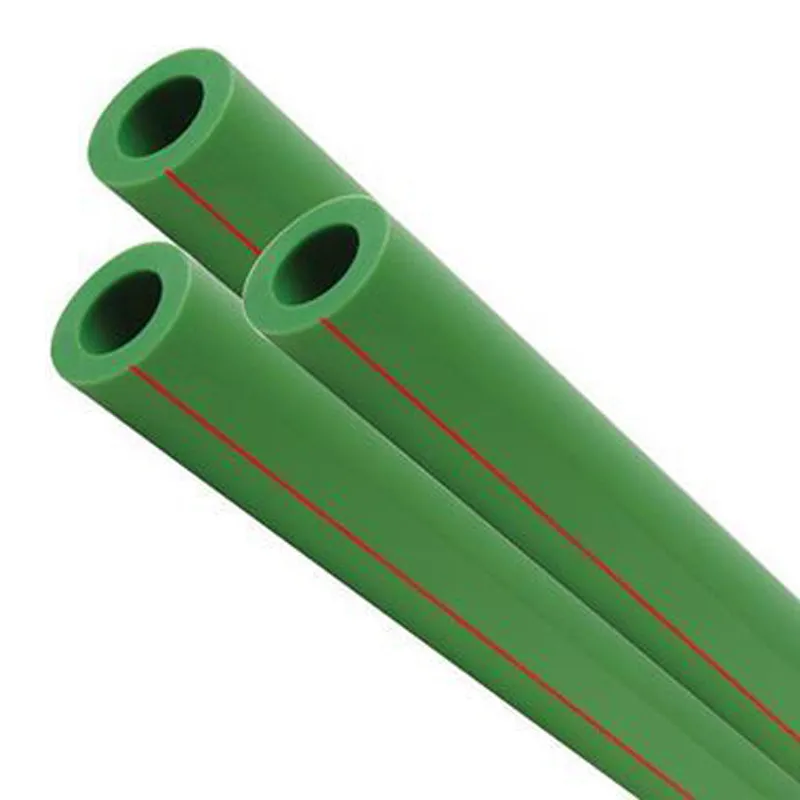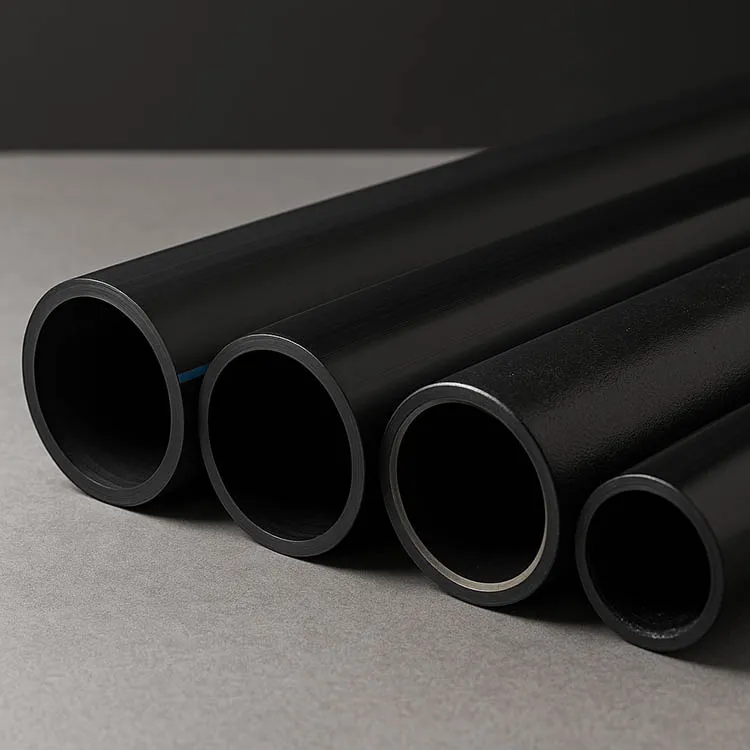01. Nominal diameter (DN):
The nominal diameter of thermoplastic piping system tubing, which represents the size of the pipe's inner diameter, outer diameter, or its approximation.
02. Hoop bending stiffness / hoop stiffness:
A measure of the ability of a pipe to resist hoop deformation. The test method or calculation method can be used to determine the value, and the unit is N/m2 or KN/m2.
03. Elastic diameter deformation rate:
The ratio of the vertical elastic deformation of the pipe diameter to the diameter of the central axis of the pipe wall section before loading under the external pressure load. Expressed as a percentage, determined by the flattening test.
04. Out of roundness:
The difference between the maximum outer diameter and the minimum outer diameter measured at the same cross-section of the pipe.
05. Standard size ratio (SDR):
The ratio of the nominal outer diameter of the pipe to the nominal wall thickness. SDR=DN/en.
06. Maximum working pressure (MOP):
The maximum effective pressure of the fluid that is allowed to be used continuously in the piping system, the unit is MPa.
07. Nominal wall thickness en:
The specified value of the wall thickness of the pipe, in mm.
08. Total use (design) coefficient C:
An overall factor with a value greater than 1 that takes into account service conditions and properties of components such as fittings in the piping system that are not reflected in the lower prediction limit.
09. Predicted hydrostatic strength lower confidence limit (σLPL):
When the confidence level is 97.5%, the lower limit of the predicted value of hydrostatic strength corresponding to temperature T and time t, σLPL=σ(T, T, 0.975), in MPa.
10. Minimum required strength (MRS):
The stress value obtained by rounding down the value of the lower confidence limit σLPL at 20°C and 50 years according to the R10 or R20 series to the nearest priority number, the unit is MPa. When σLPL is less than 10MPa, it is rounded according to R10 series, and when σLPL is greater than or equal to 10MPa, it is rounded according to R20 series.
11. Design stress σs:
The allowable stress under the specified application conditions, MRS divided by the coefficient C, is rounded to the next smaller value in the R20 series of priority numbers, i.e. σs=[MRS]/C.
12. Allowable deviation/limit deviation:
Deviation between the limit value and the specified value is allowed. The difference between the maximum allowable value and the specified value is called the upper deviation, and the deviation between the minimum allowable value and the specified value is called the lower deviation.
13. Tolerance:
The allowable deviation of the specified value is expressed as the difference between the maximum allowable value and the minimum allowable value. Equal to the difference between the upper and lower deviations.
14. Outer diameter at any point:
The outer diameter measured through the cross-section of the pipe at any point, in mm.
15. Average diameter:
Corresponds to the diameter of the central circle of the pipe wall section. The average diameter is equal to the difference between the average outer diameter and the average wall thickness, or the sum of the average inner diameter and the average wall thickness, in mm.
16. 20℃, 50-year lower confidence limit (σLCL):
A stress value used to evaluate material properties, refers to the lower confidence limit of the predicted long-term strength of pipes made of this material at 20°C and an internal water pressure of 50 years, with a confidence level of 97.5%, in MPa.
17. Long-term hydrostatic strength (σLTHS):
Represents the predicted average strength at temperature T and time t (average strength refers to the lower confidence limit of the material strength at a confidence level of 50%), in MPa.
18, 20℃, 50-year long-term strength (σLTHS):
The average strength or predicted average strength of the pipe under water pressure for 50 years at 20°C, in MPa.
19. Environmental stress cracking:
The phenomenon of accelerated stress cracking due to the influence of environmental conditions. The environmental stress cracking resistance of materials is often expressed by ESCR.
20. Degree of cross-linking:
A physical quantity representing the degree of crosslinking. When crosslinking occurs between polymer chains, it is expressed as the average number of crosslinking units per polymer molecule. Also known as cross-linking point density, cross-linking index. Usually expressed as gel content.
21. Toughness failure:
Destruction with obvious awakening deformation.
22. Brittle failure:
There is no apparent failure of plastic deformation in the fractured region.
23. Penetration damage:
The pressurized fluid in the pipe seeps out of the pipe wall to form a form of failure in which loss is visible but no obvious cracking occurs.
24. Hoop stress:
The stress in the circumferential direction of the pipe caused by the internal pressure in the pipe wall.
25. Bursting pressure:
The maximum pressure before the pipe ruptures in the pipe hydrostatic burst test.
26. Failure temperature:
The maximum temperature that occurs when the piping system exceeds the control limits.
27. Structural wall pipe:
The composite pipe wall structure composed of multi-layer materials and the pipe wall are collectively referred to as open rib, closed rib (hollow) and other special-shaped pipe wall structures.
28. Special-shaped wall pipe:
A general term for pipes with smooth inner walls and spiral, annular or ribbed outer walls.
29. Double-wall corrugated pipe:
The inner wall is smooth and flat, the outer wall is trapezoidal or arc-shaped corrugated rib, and the space between the inner and outer corrugations is a hollow special-shaped pipe wall.
30. Annular rib tube:
The inner wall of the pipe is smooth and flat, and the outer wall is provided with a special-shaped pipe wall pipe with annular reinforcing ribs.
31. Spiral rib tube:
The inner wall of the pipe is smooth and flat, and the outer wall reinforcing ribs are spiral-shaped.
32. Flat wall tube:
Homogeneous pipe with smooth inner and outer walls.
33. Mechanical connection pipe fittings:
Pipe fittings that are connected by mechanical connection methods (such as threaded connections, compression connections, etc.).
34. Elastic sealing pipe fittings:
A pipe fitting that is sealed with an elastic sealing ring. Axial loads cannot normally be transmitted.
35. Solvent-bonded pipe fittings:
Fittings connected by means of solvent-based adhesives.
36. Electrofusion fittings:
The fittings for the electrical heating elements are preset on the connection surface (below).
37. Hot melt butt fittings:
It is a pipe fitting that has the same size as the pipe to be connected, and is connected by hot-melt butt welding.
38. Hot melt socket pipe fittings:
The inner surface of the socket of the pipe fitting and the outer surface of the insertion end of the pipe or valve are heated with a heating tool, and then inserted and welded to each other to realize the interconnected pipe fittings.





939.webp)

294.webp)
476.webp)
420.webp)
146.webp)
460.webp)
287.webp)
274.webp)
688.webp)


